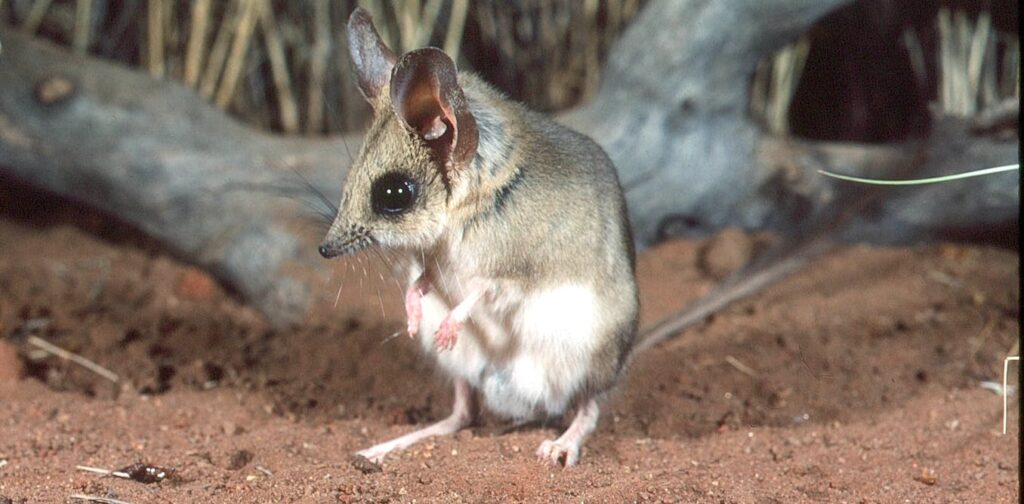
Australia, known for its diverse wildlife, has made a significant discovery in the world of carnivorous marsupials. Previously thought to be a single species, the kultarr, a small insect-eating marsupial, has now been identified as three distinct species. This revelation comes after a comprehensive genetic study conducted in 2023, challenging long-held beliefs about this elusive creature.
The kultarr, often mistaken for a hopping mouse due to its long legs and tail, is a rare sight in the Australian outback. It moves with the speed and agility of a greyhound, albeit on a much smaller scale. Until recently, it was believed to inhabit a vast range from central New South Wales to the Carnarvon Basin in Western Australia. However, recent research has unveiled a more complex picture.
Unveiling the Three Kultarr Species
With support from the Australian Biological Resources Study, a team of researchers from the University of Western Australia, Western Australian Museum, and Queensland University of Technology embarked on a mission to unravel the mysteries of the kultarr. By examining specimens from museums across Adelaide, Brisbane, Darwin, Melbourne, Sydney, and Perth, they combined genetic data with detailed body and skull measurements. The findings were groundbreaking: the kultarr is not one, but three distinct species.
The Eastern Kultarr
The eastern kultarr (Antechinomys laniger) is the smallest of the trio, with an average body length of approximately 7.5 cm. It is characterized by its darker fur and relatively smaller ears. This species is primarily found on hard clay soils around Cobar in central New South Wales, extending north to Charleville in southern Queensland.
The Gibber Kultarr
The gibber kultarr (Antechinomys spenceri) stands out as the largest and most robust, with an average body length of about 9 cm. It is distinguished by its chunky build, large head, and thick legs. As its name suggests, this species inhabits the stony deserts, or “gibber plains,” of southwest Queensland and northeast South Australia.
The Long-Eared Kultarr
The long-eared kultarr (Antechinomys auritus) occupies a middle ground in terms of size but is notable for its exceptionally long ears, nearly matching the length of its head. It is found in scattered populations across the central and western sandy deserts, residing on isolated stony plains.
Conservation Concerns and Future Directions
Despite their fascinating characteristics, all three kultarr species are challenging to locate, complicating efforts to assess their population sizes and extinction risks. The long-eared and gibber kultarrs appear relatively stable, yet threats from land clearing and invasive predators like cats and foxes loom large.
The eastern kultarr, however, faces more pressing concerns. Historical records and museum specimens dating back to the 1890s indicate a once broader distribution across arid New South Wales and into central Queensland and the Northern Territory. Alarmingly, it may now be extinct in the Northern Territory and parts of northwest Queensland.
“We need targeted surveys to confirm where each species still survives, especially the eastern kultarr, whose current range may be just a shadow of its former extent,” said Cameron Dodd, a key researcher involved in the study.
To safeguard these unique marsupials, focused conservation efforts are imperative. Identifying and prioritizing areas for action will be crucial in ensuring these remarkable creatures do not vanish before they are fully understood.
The Broader Implications of Taxonomic Research
This discovery underscores the importance of taxonomic research in conservation. Australia is home to numerous small mammal species that remain undescribed, rendering them invisible in conservation policies. Without formal recognition, these species risk disappearing without a trace.
“Taxonomic research like this is essential – we can’t protect what we don’t yet know exists,” emphasized the research team.
The study also highlights the invaluable contributions of experts like Adjunct Professor Mike Westerman at La Trobe University, whose work continues to advance our understanding of Australia’s rich biodiversity.
As researchers delve deeper into the complexities of Australia’s wildlife, the hope is that discoveries like these will not only enrich our knowledge but also galvanize efforts to preserve the natural heritage of this unique continent.





